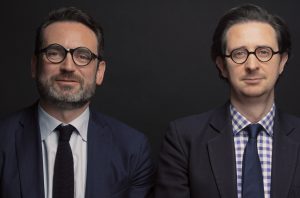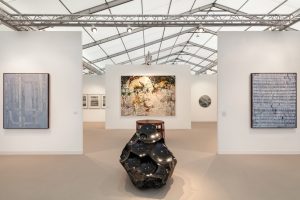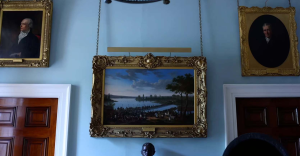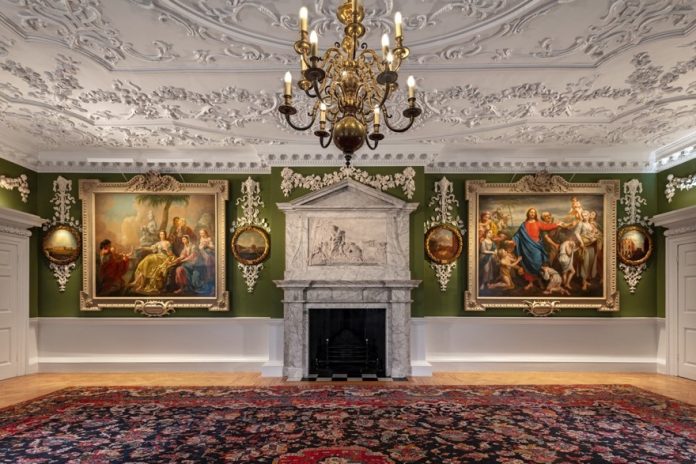SME Magazine catches up with Andrew Molyneux, co-founding director of TM Lighting.
Can you start by telling us what your company is called and when did you launch?

I founded TM Lighting with my business partner Harry Triggs in 2012, bringing together our experience of over 30 years in the industry. The name TM Lighting was born out of combining our surnames.
What was the inspiration behind it?
In the UK we are fortunate to have hundreds of architecturally outstanding historic houses that possess remarkable collections of art created by some of the world’s most renowned artists, alongside rare and significant furniture pieces, tapestries and ceramics. We long felt that these literal treasure houses were not lit to the extent they deserved. Before our eventual move into public and commercial galleries, private residences and hospitality spaces, we identified a market need for a product that could illuminate artworks with museum-quality light within historic houses that was also more sustainable and conservation-friendly than any other product on the market. Our first picture lights could light works of art as tall as 3m as evenly as you would find in a museum with these other benefits too.
The other impetus for us to establish the company was a new energy savings legislation that had been introduced in 2011, which required a move away from incandescent lighting as the standard.
How important was developing new technology in your success?
We are proud of the developments we have made in LED, entering the market at the early stages of a new generation for the technology. Around the time of our launch, LEDs had become more efficient, yet the quality of light was still poor, meaning the ‘warmth’ of light varied and amount of the light spectrum revealed was limited. The way a viewer perceives an artwork is mostly down to lighting, so if the lighting is poor, it distracts us from viewing a work at its best.
Through our research and development in LED technology we have enabled works of art in historic spaces to be viewed more authentically by using the best colour rendition and appropriate colour temperature. This has been key to our business growth. At the core of the business is continued innovation, going beyond the initial developments with LED to continually innovate as our product range evolves. We are passionate about educating the market to the benefits of good quality LED. 
What expertise and experience did you value in building your team?
From the beginning, we identified that it is the breadth of skill and experience that makes a great company. Harry and I brought Over 40 years of combined experience in lighting and product design to the business, enabling us to have that diversity of knowledge from the start.
Given the specialism of our business standing between technology, design and art, we require varying skill sets across our fantastic team of 20. Cross-sector skills in engineering and design, manufacturing and assembly, marketing and sales, and strong management and leadership have been vital to our sustained growth.
Underpinning this experience are shared values that remain at our core: creativity, honesty and integrity, innovation, quality, sharing and celebration. In our ten years in business, we have found that this has created a harmonious team, which has led to our business success.
Who are your main audiences and how have these groups developed since the foundation of the business?
As our product range has grown so have the audiences with which we work. We began with the heritage sector, with our knowledge of our work spreading by word of mouth, and B2B with lighting designers and interior designers. We then developed and introduced a range of miniature accent lights which further expanded our audience, particularly to private clients. Our introduction of the Gallery range of spotlights in 2017 enabled us to work with the commercial gallery and museum sectors. As we have expanded the products we offer, we have worked across the hospitality too, utilising both picture lights and spotlights in these spaces.
What challenges have you faced along the way and how did you overcome them?
I’m sure many small businesses have experienced a similar challenge to us in releasing a product that is then replicated by other companies. In our early stages, some of our intellectual property was not necessarily patentable. We stayed ahead of competitors by innovating quickly, our smaller size giving us the advantage of flexibility. Now our latest products are all run past our IP legal team for patents and registered designs.
What advice would you give any people who are thinking about starting their own business?
Don’t think about it. Do it. There is always hesitancy at the beginning of starting a business and concerns over the practicalities, but once everything has been arranged through an accountant, the focus can turn to the original concept: getting the idea to market.  Identify a market need, ensure sure you are introducing a product to market that differentiates you, whether that’s financially or in its uniqueness, then bring it to market as quickly as possible. Continue to innovate, considering how to make the product the very best offering for the market. We took inspiration from the development of the iPhone, which entered an already saturated market and differentiated itself through an innovative design approach and its product offering. It has continued to evolve over the past two decades to stay ahead of its competition.
Identify a market need, ensure sure you are introducing a product to market that differentiates you, whether that’s financially or in its uniqueness, then bring it to market as quickly as possible. Continue to innovate, considering how to make the product the very best offering for the market. We took inspiration from the development of the iPhone, which entered an already saturated market and differentiated itself through an innovative design approach and its product offering. It has continued to evolve over the past two decades to stay ahead of its competition.
What key products have you released to market in the past year and how were they developed?
Our latest release is the MasterLight, a picture light with the power and light distribution of a classic version of the light, yet housed within a slimmer hood that makes it a discreet option for clients across historic houses and private residential settings.
We have innovated in the ‘downlight’ space as well, creating the ArtDownlight, designed with the residential private collector in mind, to individually ‘pick out’ an artwork with a tightly focused light. A highly specialised product, we have soft launched it over the last two years.
We establish a market need for a product, then we work through a gating system with the design and sales teams to help identify whether it is a product that we should take forward. We develop the products in CAD, then prototype, test, refine, and release, but everything starts with a sketch. Some lights start as custom creations for a particular need, which turns into a full product, and for this reason, several of our lights are patent-protected.
For each of our products we use a simple ‘3Cs’ methodology to ensure that they are of the highest quality of light. This is broken down to Colour Temperature – the ‘warmth’ of light, Colour Rendition – the amount of the colour spectrum revealed by a light, Colour Consistency – the uniformity of lighting of a collection.
What are some recent highlight projects?
A great diversity of projects in recent years has enabled us to demonstrate the versatility of our current range. For example, our picture lights have recently been installed within historic houses such as Kenwood House in London, installing the discreet MasterLight here, and Arundel Castle in West Sussex, in which we installed our Classic Picture Lights. The Vesper Bar at the Dorchester is now home to our Art Deco-styled Aydin Picture Light, while Patek Philippe’s London flagship location is illuminated by our contemporary-styled SlimLight Pro.
With spotlights, we have illuminated the entirety of the prestigious Frieze London with our Gallery spotlights and floodlights, as well as projects such as Theatre Royal Drury Lane in the West End and L’Ecurie event space at Dorfold Hall in Staffordshire, both RIBA Award Winners.
What is your proudest achievement?
Our first product was credited at the Lighting Design Awards in our first year of business, which gave us the confidence to continue to innovate and grow the business. We have also had the privilege to work with many acclaimed British artists including Antony Gormley, Conrad Shawcross, Damien Hirst and Emma Hart.
I am proud that we have achieved, and are continuing to achieve, our initial mission of transforming the collections of many stately homes across the country with the highest quality art lighting. From Reynolds to Rembrandt, we have ‘brought art to light’ for some of the country’s most esteemed collections.
Our proudest achievement in the contemporary space has been supplying the lighting for the entirety of Frieze London, one of the leading art fairs globally. It’s a vote of confidence in the quality and trust in our lighting to have been able to illuminate a fair of this size and calibre.
Where do you hope the business will be in, say, five or ten years?
We hope to be the leading international art lighting specialist, offering a range of projects that enable art to be brought to light anywhere and everywhere it is needed. We have taken recent steps to gain UL accreditation for our lighting, an international casque marque of a product’s safety and quality, particularly in North American and Middle Eastern markets.
We were responding to demand from current clients with presences there. We see this as a stepping stone to our continued international growth.


